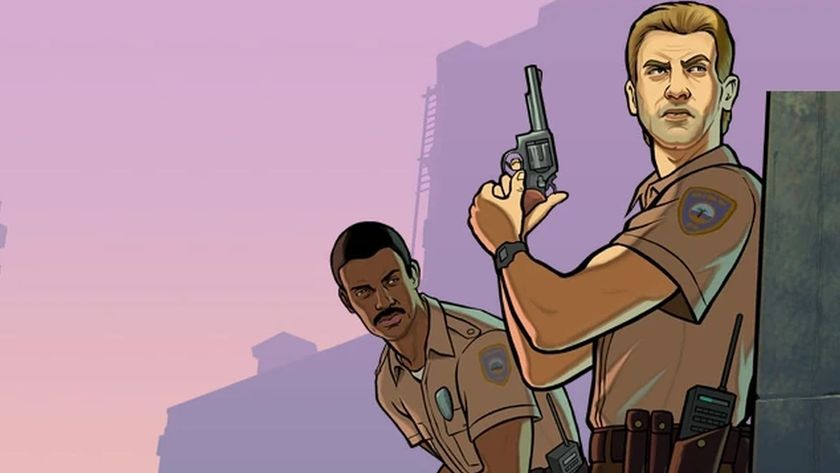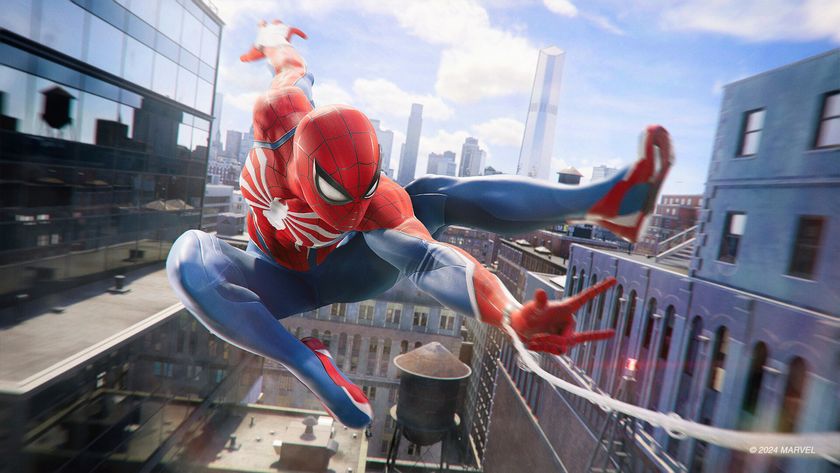The ultimate guide to The Legend of Zelda games
For its 35th anniversary, we explore the history of the Legend of Zelda series: From the Famicom game that started it all through to the newly released Skyward Sword HD
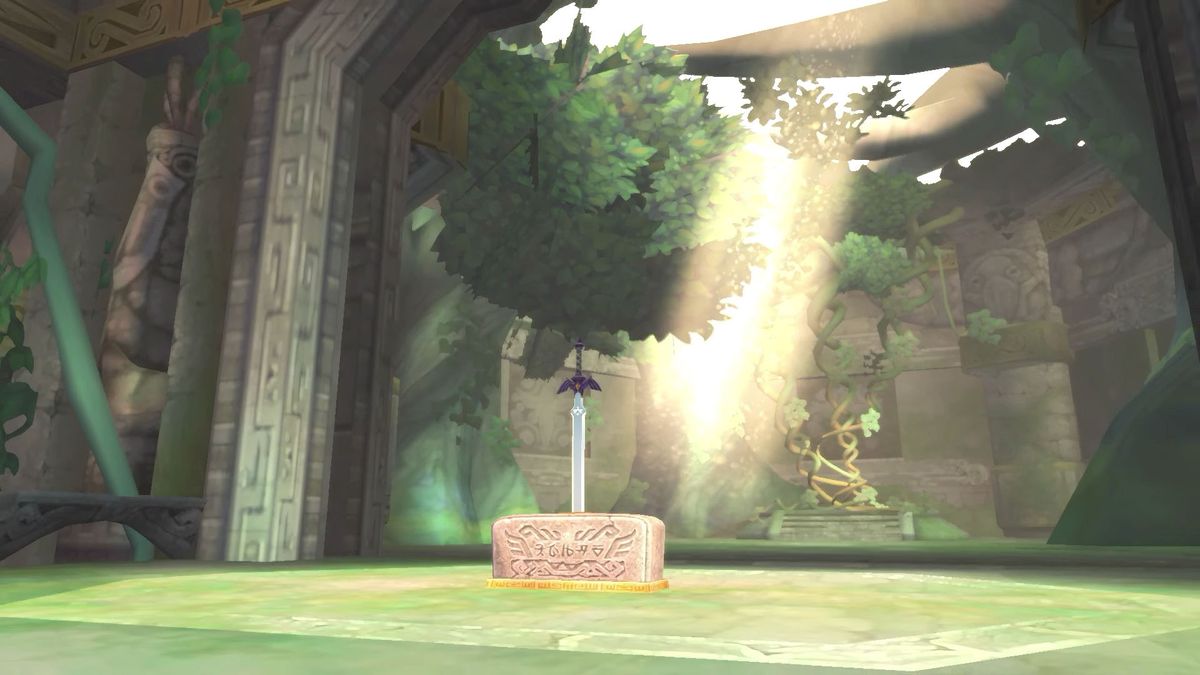
- The Legend of Zelda
- Zelda 2: The Adventure of Link
- The Legend of Zelda: A Link to the Past
- The Legend of Zelda: Link's Awakening
- The Legend of Zelda: Ocarina of Time
- The Legend of Zelda: Majora's Mask
- The Legend of Zelda: Oracle of Ages / Oracle of Seasons
- The Legend of Zelda: The Wind Waker
- The Legend of Zelda: Four Swords Adventures
- The Legend of Zelda: The Minish Cap
- The Legend of Zelda: Twilight Princess
- The Legend of Zelda: Phantom Hourglass
- The Legend of Zelda: Spirit Tracks
- The Legend of Zelda: The Ocarina of Time 3D
- The Legend of Zelda: Skyward Sword
- The Legend of Zelda: The Wind Waker HD
- The Legend of Zelda: A Link Between Worlds
- The Legend of Zelda: Majora's Mask 3D
- The Legend of Zelda: Tri Force Heroes
- The Legend of Zelda: Twilight Princess HD
- The Legend of Zelda: Breath of the Wild (2017)
- The Legend of Zelda: Link's Awakening
- The Legend of Zelda: Skyward Sword HD
One of Nintendo's greatest legends was born on February 21, 1986. That's the day The Legend of Zelda launched for the Famicom in Japan. Nintendo is celebrating the 35th anniversary of the series with the release of The Legend of Zelda: Skyward Sword HD, a game that takes players back to the beginning of the Legend of Zelda timeline. What better time to get up to speed with the franchise with our ultimate guide to The Legend of Zelda games.
As Link and Zelda celebrate 35 years of saving Hyrule from the forces of darkness we wanted to do something special. That's why we decided to chart the entire history of the series, starting with the Hero of Time's original adventure game through to the release of Skyward Sword HD. We cover the best Zelda games here and everything in-between. So grab yourself a coffee and settle in for our complete guide to The Legend of Zelda games.
VIDEO: Should you play Skyward Sword HD?
The Legend of Zelda
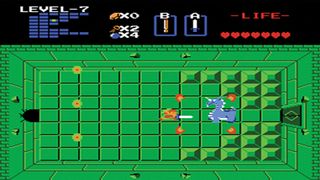
The Legend of Zelda (1986)
Developer: Nintendo R&D4 | Publisher: Nintendo
Platform: NES, Famicom Disk System
Thanks to the modern era of games, and in turn the modern day video game player, it's difficult to explain how important The Legend Of Zelda was when it was released 35 years ago. Being given an element of choice or handed an open world on a plate may be commonplace today, but the original Zelda was a revelation in 1986, and continues to have an influence on the entire medium. Wonderfully, it was Miyamoto's simple approach to his craft that sparked the creation of the series.
With Mario focused on scripted events and linear levels, Zelda would be treated in direct contrast to this, forcing the player to explore and use their own sense of curiosity and imagination to figure out the next step; it remains many individuals' favorite in the series thanks to how unrestrictive it is. The narrative is within the player's hands to craft, each event unravelling naturally without the need for any predetermined plotting or unnecessary hand holding. It was brave of Nintendo to try and recapture this spirit again in 2017 with Breath of the Wild, so to attempt it 35 years ago makes it all the more groundbreaking.
Zelda 2: The Adventure of Link
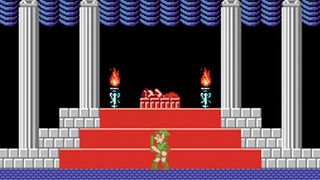
Zelda 2: The Adventure of Link (1987)
Developer: Nintendo R&D4 | Publisher: Nintendo
Platform: NES, Famicom Disk System
The black sheep of the family, Zelda 2 is still one of the most audience-dividing. Most people are aware of its abandonment of the top down view in favour of a more traditional side-scrolling one, as well as the addition of experience points (which haven't appeared since), but few remember how inventive The Adventure Of Link actually was. The perspective may have shifted, but Nintendo was still extremely committed to the idea of an open playing field.
Sign up to the GamesRadar+ Newsletter
Weekly digests, tales from the communities you love, and more
A year after the first, those responsible for the follow-up had merely expanded the concept. Engaging with other characters and participating in combat may have taken place with the camera focused on our hero's lovely profile, but the ability to return to the more familiar bird's-eye view when traveling throughout Hyrule made the game feel huge. It was no longer just a case of pushing a screen to either side. Instead, Zelda 2 gave the impression of being far more epic, journeying across an enormous landscape that was deservedly grand. Without it, the franchise's future would've been vastly different…
The Legend of Zelda: A Link to the Past
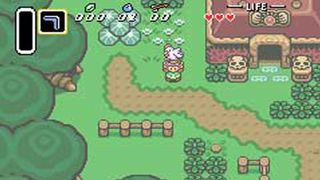
The Legend of Zelda: A Link to the Past (1991)
Developer: Nintendo EAD | Publisher: Nintendo
Platform: SNES
The Super Nintendo's most polished gem, A Link To The Past will top peoples' 'Best Game Of All Time' lists as long as the medium exists. As untouchable in 2021 as it was on its release, Nintendo's decision to push development from the NES onto its successor may have been an obvious and inevitable one, but that does nothing to diminish the genius at the core of the game's design.
The addition of the Dark World – which showed Hyrule ravaged by Ganon – shattered the illusion of a single environment the third Zelda had spent a good few hours building up. Not only did it create a model that was quickly borrowed by the vast majority, but the world switch advanced the series in ways that continue to be taken for granted. New weapons and items had become expected at this point, but dungeons that had multiple levels were a revelation. Showcasing Nintendo's talent for both the challenging and the complex, this was the ultimate coming together of the previous two installments, and a statement of intent in what would become the most recognized foundation for a Zelda title.
The Legend of Zelda: Link's Awakening
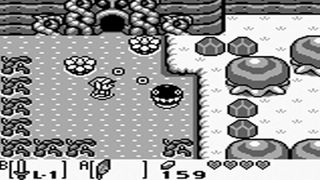
The Legend of Zelda: Link's Awakening (1993)
Developer: Nintendo EAD | Publisher: Nintendo
Platform: Game Boy
The first Zelda on a handheld was arguably the most unusual yet. As a game that veers away from the formula to the nth degree, Link's Awakening is responsible for so many of the finer details that the majority of fans now expect as the norm. Ignoring the likes of Hyrule and Zelda herself to centre on Koholint Island and the Wind Fish, it broke from tradition by having Mario characters appear in the world. The importance of the Game Boy title is the atmosphere and incredibly rewarding test it poses. There's a constant sense of something not being quite right throughout its entirety, and the genuine confusion many of the dungeons and side-quests trigger means this is a far more mature entry than its predecessors. Remember that the recurring musical instrument theme and the always popular trading minigame began here, and what was once a fun after-hour project for a few Nintendo employees now carries with it a serious legacy.
The Legend of Zelda: Ocarina of Time
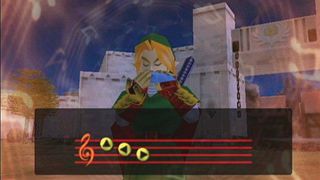
The Legend of Zelda: Ocarina of Time (1998)
Developer: Nintendo EAD | Publisher: Nintendo
Platform: N64
Much like Super Mario 64, the impact Ocarina Of Time had on the transition to 3D cannot be overstated. A culmination of everything Nintendo had learned and put into effect in its previous games, the new technology enabled the studio to realise all its most extravagant dreams. Many would argue it was just an extension of everything that had come before, and this logic rang true to a certain degree, but 'Z-targeting' and the arrival of Epona meant no one could accuse the template of not evolving.
Again, though, it was how gargantuan Hyrule seemed that left such a mark on its audience. The hookshot, for example, was no longer specifically for dungeons or a makeshift weapon; instead it was a tool necessary to see what the entire world had to offer. Such was this level of discovery that you could even wander to places you had no right to be in, forced to return at a later point. It was undoubtedly the most well-realised of the series to date, but take a step back and the influence of the first three are more than apparent.
The Legend of Zelda: Majora's Mask
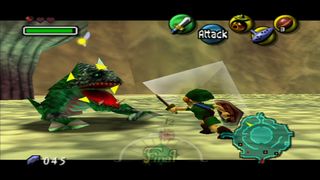
The Legend of Zelda: Majora's Mask (2000)
Developer: Nintendo EAD | Publisher: Nintendo
Platform: N64
What would you create after making one of the most commercially and critically successful games of all time? We doubt the answer would be Majora's Mask. Inventively subverting the Zelda formula, it implemented a time mechanic that meant there was a constant threat of failing after three days in its universe, just under 60 minutes for the player. Although this Sword of Damocles was at the game's heart, it was the skill in how its many elements were implemented which was staggering.
Simultaneously constructing so many layers to the point of near confusion – from the main plot to its dozens of side-quests – it required an almost meticulous attitude to figure out the exact pattern, giving it enough standing to easily be argued as one of the finest puzzle-centric games of its era. It was also (Link's Awakening notwithstanding) the first real departure for Zelda in years. Unfortunately, it alienated many a fan, presumably put off by the harsh shift and the constant fear of having to restart should time get the better of the situation. It's not difficult to see its influence on other games, however, not least Capcom's Dead Rising series or Grasshopper Manufacture's Flower, Sun, And Rain… That, and it introduced Tingle to the world too.
The Legend of Zelda: Oracle of Ages / Oracle of Seasons
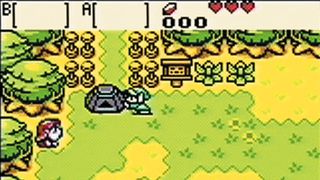
The Legend of Zelda: Oracle of Ages / Oracle of Seasons (2001)
Developer: Flagship/Capcom | Publisher: Nintendo
Platform: Game Boy Color
The Forgotten children of the Zelda franchise, the Oracle games passed a wide array of people by when the delayed duo arrived on Game Boy Color several weeks after the launch of the Game Boy Advance. But those who overlooked the Oracle pair truly missed out on two of the most interesting Zelda titles of their era. Aside from yet more ways to toy with the central gameplay mechanic – Oracle Of Seasons' ability to open up paths by changing the weather is ingenious – the knowledge that the true ending was only accessible to those who finished both games made it a unique proposition.
The Legend of Zelda: The Wind Waker
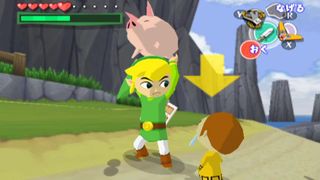
The Legend of Zelda: Wind Waker (2002)
Developer: Nintendo EAD | Publisher: Nintendo
Platform: GameCube
For anyone who believes visual sheen is irrelevant, they only need look at The Wind Waker for proof. Be it positive or negative, the cel-shaded Link sailing through what was once Hyrule managed to spark an extreme reaction from everyone seeing it for the first time, and those who saw past such a 'childlike' technique quickly realized its brilliance. Zelda had always been about exploration and discovery, but the chance to do that by sailing to other islands gave a whole new meaning to the idea of an adventure game.
The graphical shift wasn't just for show either. The much more stylized look meant Nintendo now had the power to drop the most subtle hints for anyone struggling, even if it was a simple glance as Link spied an object that could be useful. It may have seemed like the series was aiming for a younger demographic but Wind Waker could be the most complete of all the iterations in the canon.
The Legend of Zelda: Four Swords Adventures
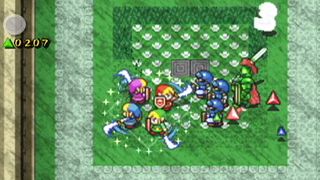
The Legend of Zelda: Four Swords Adventures (2004)
Developer: Nintendo EAD | Publisher: Nintendo
Platform: GameCube
The four Swords concept has had two distinct entries, both of which do a good job of showcasing just how flexible the ideas at Zelda's core are. Where the home console was concerned, though, the under-utilized link between the GameCube and Game Boy Advance was never employed more finely than here. Managing to both execute co-op and competitive gameplay simultaneously – sneaking into a dungeon to steal a piece of treasure was a constant source of entertainment – it proved that the franchise certainly wasn't restricted to the single-player arena, even if the Four Swords series was the first proper attempt that had been made at expanding Zelda into the multiplayer space.
The Legend of Zelda: The Minish Cap
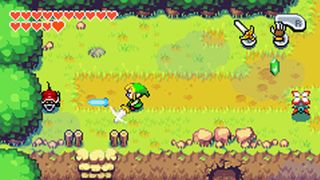
The Legend of Zelda: The Minish Cap (2004)
Developer: Flagship/Capcom | Publisher: Nintendo
Platform: Game Boy Advance
Before Nintendo settled on its very specific formula for Zelda on the DS, there was The Minish Cap. Decidedly Wind Waker-esque in tone, it was the titular piece of headgear that unveiled yet more depth to the universe. It takes some serious courage to take players back through areas they've just experienced with the only change being the size of the main character, but the skill in which these sections were mapped out made them feel brand new. It also showcased that Nintendo was intent on carving out a niche for Link when it came to its handheld devices, experimenting with new ideas that would reappear and develop somewhere down the line.
The Legend of Zelda: Twilight Princess
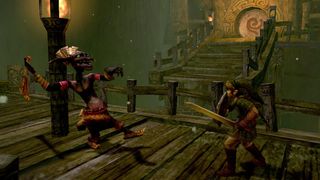
The Legend of Zelda: Twilight Princess (2006)
Developer: Nintendo EAD | Publisher: Nintendo
Platform: GameCube, Wii
Marking the GameCube's swansong and the start of the Wii craze, Twilight Princess is often unfairly passed off as Ocarina Of Time 2. While there are certainly similarities, a more sensible view is that Twilight Princess was building on a game that was still widely considered to be the best. It also highlighted that Nintendo was far from running on empty. Parallel realms and music continued to be a prominent feature but the ability for Link to transform into a wolf was yet another original spin for the ever evolving series.
Ravaging the world in an off-putting and claustrophobic grey cloud, Twilight Princess adopted a far darker and more sinister tone than many Zelda games had previously dared. The coup de grâce was the introduction of swordplay while on horseback. Using it to create what is still one of the finest end set-pieces in the cycle to date, it's an overlooked addition to a very worthy title.
The Legend of Zelda: Phantom Hourglass
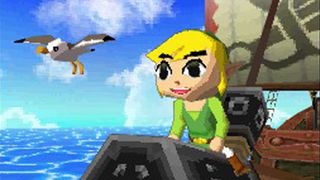
The Legend of Zelda: Phantom Hourglass (2007)
Developer: Nintendo EAD | Publisher: Nintendo
Platform: DS
The birth of a new type of console also saw the rise of a very distinct Zelda experience. Stylistically following on from The Wind Waker, Phantom Hourglass rose from the ashes to prove that stylus control was not the disadvantage some assumed it would be. Though opinion seemed to suggest there was no way of controlling Link comfortably without buttons, it was proven wrong by the finished game's deft touch screen controls. Made more impressive by the return of sailing sections, the only real issue that stood out was the odd structuring around a central tower. Asking you to return to it constantly as and when you had extended the power of the central hourglass, it introduced a monotony that arguably makes Link's DS debut the weakest entry in the series.
The Legend of Zelda: Spirit Tracks
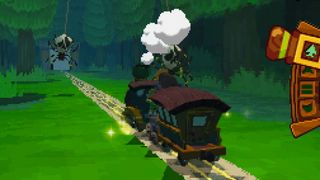
The Legend of Zelda: Spirit Tracks (2009)
Developer: Nintendo EAD | Publisher: Nintendo
Platform: DS
For the layman, it may seem as if Nintendo simply switched out ships for trains and called it a day where Spirit Tracks was concerned. The layman, as usual, would be wrong. Giving Link a train to roam around in was certainly different – and crafting a final boss out of it was easily the highlight of the game – but killing Princess Zelda off within moments of the start has to be Spirit Tracks ' boldest original idea. She then proceeds to follow Link around at every turn, hence the name, making it a surefire way to catch your audiences' attention.
Spirit Tracks is also one of the few games to really embrace this idea of travel. The train becomes pivotal to the entire concept, even presenting a learning curve that has to be mastered if all the usual secrets are to be unearthed. The same line of thinking spills over when it's time to control Link and Zelda simultaneously. The presentation and introduction may be accessible, but the level of depth you'd expect from any respected Zelda entry is more than present.
The Legend of Zelda: The Ocarina of Time 3D
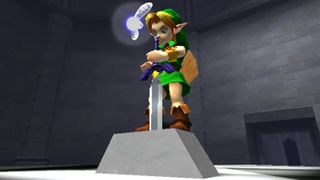
The Legend of Zelda: The Ocarina of Time 3D (2011)
Developer: Grezzo | Publisher: Nintendo
Platform: 3DS
Ocarina of Time 3D is considered by many to be one of the greatest video game remakes of all time, and for good reason. Developer Grezzo took a foundation that refused to reflect the slow decay of time and built upon it in an impressive fashion. The touch screen could be used to manage inventory items and play the titular ocarina, while the gyroscopic and stereoscopic features of the 3DS were smartly utilized to bring a new feel to Link's weapons and world. Factor in updated graphics, the inclusion of the modified Master Quest dungeons and mirrored overworld, a boss challenge mode, and Ocarina of Time 3D stands as perhaps the best version of a game that refuses to age.
The Legend of Zelda: Skyward Sword
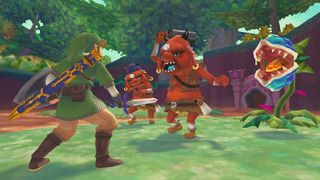
The Legend of Zelda: Skyward Sword (2011)
Developer: Nintendo EAD | Publisher: Nintendo
Platform: Wii
Skyward Sword was an ambitious entry to The Legend of Zelda series. It was also one of the most divisive. Arriving in celebration of the 25th anniversary, Skyward Sword is, canonically, the first game in the Zelda timeline, filling in gaps in the lore and detailing the origins of the Master Sword. While there was plenty for long-time fans to love, Skyward Sword dragged the series into the future with expressive support for the Wii Remote and MotionPlus peripheral.
It was supposed to let you embody the role of Link as he moved between a world in turmoil and the clouds above, battling foes with 1:1 accuracy and exploring some of the smartest dungeons the series had ever seen. Whether it was the linearity of the limitations of the MotionPlus technology, Skyward Sword continues to divide the fanbase.
The Legend of Zelda: The Wind Waker HD
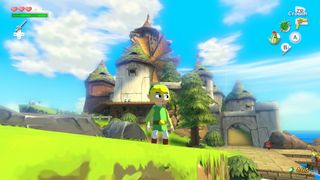
The Legend of Zelda: The Wind Waker HD (2013)
Developer: Nintendo EAD | Publisher: Nintendo
Platform: Wii U
The Wii U never got a Legend of Zelda to call its own – that alone is evidence of the console's strange standing in Nintendo's history. Thankfully, it did get a remastered version of 2002's Wind Waker. The GameCube classic was given another chance to shine, arriving with refreshed resolution and lighting, making smart use of the Wii U's touchpad to let players control the map and inventory, limited support for the gyroscope functionality of the GamePad, and smart quality-of-life improvements to iron out some of the wrinkles in the original design. Wind Waker HD set a template for remasters that Nintendo would return to time and time again.
The Legend of Zelda: A Link Between Worlds
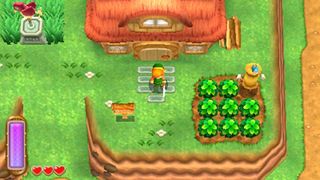
The Legend of Zelda: A Link Between Worlds (2013)
Developer: Nintendo EAD | Publisher: Nintendo
Platform: 3DS
Continuing Nintendo's propensity for using handheld entries to the Legend of Zelda series as grounds for experimentation, A Link Between Worlds was a true revelation. And it had to be, with Nintendo pitching the 3DS exclusive as a spiritual successor to A Link to the Past.
The open-ended structure, letting players clear dungeons in any order that they choose, and the smart item rental system helped A Link Between Worlds carve out a prominent place in the tapestry of the series, while the wall-merging mechanic helped set it further apart from any of its predecessors. A Link Between Worlds showed what a more open Zelda game could look like, something that Nintendo would never forget as it looked to the future of the franchise.
The Legend of Zelda: Majora's Mask 3D
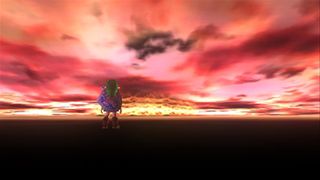
The Legend of Zelda: Majora's Mask 3D (2015)
Developer: Grezzo | Publisher: Nintendo
Platform: 2015
Given its rocky debut, Majora's Mask never seemed like a likely candidate for a re-release or remaster. Thankfully, Nintendo gave the black sheep of the family another chance in the spotlight – and it benefited from it. In the 15 years since Majora's Mask made its debut, the game became something of a cult classic and the 3DS release gave players a chance to discover just how forward-thinking (and surprisingly timeless) it really is. Enhanced graphics, enhancements to core systems and mechanics, and a revamped save system made Majora's Mask 3D the best way to experience the darkest and most complex Zelda game in its long history.
The Legend of Zelda: Tri Force Heroes
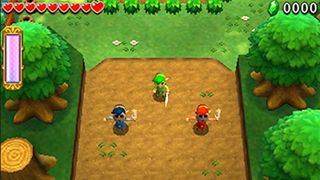
The Legend of Zelda: Tri Force Heroes (2015)
Developer: Nintendo EPD, Grezzo | Publisher: Nintendo
Platform: 3DS
The Legend of Zelda had made small steps into multiplayer with Four Swords and Four Swords Adventures, but few expected to see an expansion on the idea. For the series' second original outing on 3DS, Nintendo released Tri Force Heroes – a spirited idea that unfortunately reflected the struggles the company has faced with multiplayer experiences since the death of the link cable.
The player-count was reduced from four to three, there was a stronger emphasis on collaboration over competition, and some unstable online functionality and undesirable limitations to game modes made Tri Force Heroes feel like a rare misstep. Still, you can't blame Nintendo for trying.
The Legend of Zelda: Twilight Princess HD
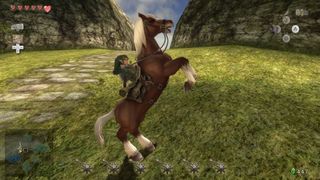
Twilight Princess HD (2016)
Developer: Tantalus | Publisher: Nintendo
Platform: Wii U
If Twilight Princess was an overlooked entry in 2006, its re-release for Wii U only helped increase its exposure. Twilight Princess was barely touched for this HD remaster, though it did contain some smart quality-of-life improvements. Cutscenes that dragged for an eternity were re-edited, the Twilight Realm was given a small overhaul, and improvements were made to the underwater sections. Given the game launched simultaneously for GameCube and Wii, the 2016 release featured the best of both worlds in terms of controls – the precise input of the former, and small use of the latter's motion functionality for projectile aiming. If you didn't play Twilight Princess the first time around, there was no excuse not to when this version landed.
The Legend of Zelda: Breath of the Wild (2017)
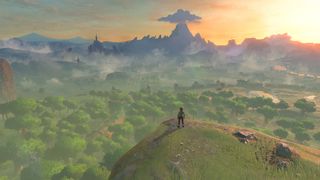
The Legend of Zelda: Breath of the Wild (2017)
Developer: Nintendo EPD | Publisher: Nintendo
Platform: Wii U, Switch
A reason The Legend of Zelda has always been able to retain its relevance throughout the years is in its ability to reinvent itself. Breath of the Wild was a revelation, embracing the nonlinearity and unstructured ideals of the first game in the series – reinventing them for a new generation. Like Ocarina of Time and A Link to the Past before it, Breath of the Wild's success can be found in its confluence of ideas and the peerless execution of them.
Even now, years on from its debut for Wii U and Switch, Breath of the Wild is still generating unique stories. The detailed physics system and its sprawling, open-ended landscape has proven itself to be a playground in the truest sense. Breath of the Wild is an adventure for the imagination, one that will influence all corners of the industry for years to come.
The Legend of Zelda: Link's Awakening
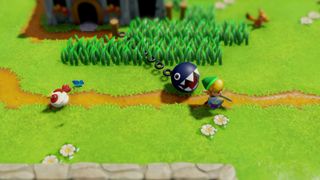
The Legend of Zelda: Link's Awakening (2019)
Developer: Grezzo | Publisher: Nintendo
Platform: Switch
Nintendo had fallen into a predictable rhythm with its remasters. Perhaps that's why we were so taken aback by Link's Awakening. What was once the best kept secret of The Legend of Zelda series was given another chance to shine on Switch, arriving with a truly gorgeous toy box diorama world and tilt-shift visuals that effortlessly evoked the feeling of the 1993 original. It was a unique styling for a unique game, a re-release that combined the foundational workings of the Game Boy adventure with elements of the Color re-release, and subtle quality-of-life improvements. Link's Awakening is special, and the beautiful treatment it was given for Switch reflects that.
The Legend of Zelda: Skyward Sword HD
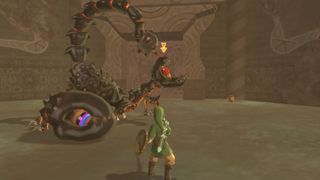
The Legend of Zelda: Skyward Sword HD (2021)
Developer: Tantalus | Publisher: Nintendo
Platform: Switch
Skyward Sword was divisive when it launched a decade earlier. It was positioned as a showcase for the Wii and the MotionPlus peripheral, designed to bring 1:1 control to the Wii Remote. There were good ideas in the game, but they were obscured by its need to act as a system showcase. Thankfully, the release of Skyward Sword HD has given one of the most under-appreciated Legend of Zelda games a chance to be re-evaluated.
Arriving with an overhauled control system, an improved framerate and resolution, and countless tweaks made to iron out artificial points of friction in the underlying design, Skyward Sword HD is a game reborn. It's a lengthy, authored adventure that celebrates the legacy of Legend of Zelda and explores the origins of its most iconic characters and equipables – the perfect release for the series' 35th anniversary.
This feature first ran in issue 115 of gamesTM magazine to celebrate the 25th anniversary. It has been edited and updated to reflect the unyielding passage of time.
Retro Gamer is the world's biggest - and longest-running - magazine dedicated to classic games, from ZX Spectrum, to NES and PlayStation. Relaunched in 2005, Retro Gamer has become respected within the industry as the authoritative word on classic gaming, thanks to its passionate and knowledgeable writers, with in-depth interviews of numerous acclaimed veterans, including Shigeru Miyamoto, Yu Suzuki, Peter Molyneux and Trip Hawkins.
Most Popular




